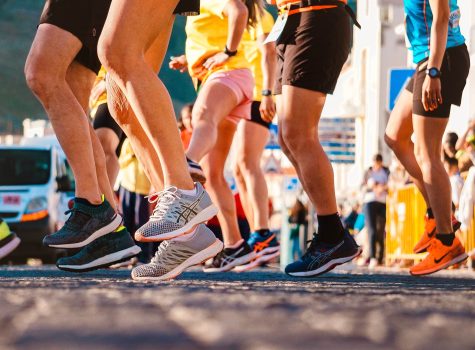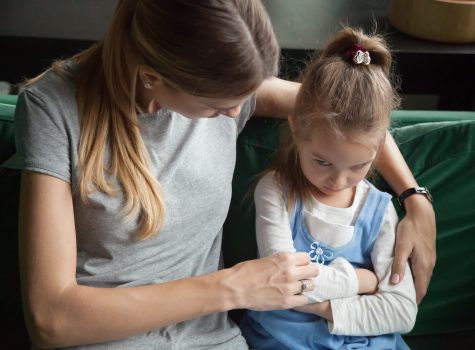
Squatting is an important movement for young and old! It is a motion we practice throughout our lifespan on a daily basis. Lowering yourself to a chair, getting on and off the toilet, bending from your knees to pick something up off the floor are all examples. When squatting, it is important to ensure your feet, knees, hips and back are all positioned correctly. Here are a few tips on how to position yourself in order to ensure a safe and effective squat technique.
How to place your feet?
Your feet should be placed about shoulder width apart at a comfortable angle for your own hips and ankles. When lowering yourself in your squat, make sure your big toe, pinky toe, and heel are all pressing equally into the ground. You should not roll out onto the outer edge of your foot, or let your toes lift.
Knees alignment
Your knees should also be kept approximately shoulder distance apart, remaining in line with your ankles. Your knees should not fall inwards towards midline or shift forward over your toes.
Hips movement
Your hips should be the first joint to move in a proper squat. They should move backwards as you lower yourself, as if reaching behind you to sit into a chair.
Support your back during the squat
Your back should be held in a neutral position. Gently engage your abdominal muscles to avoid overarching your spine. Keep your lower ribs from flaring out, and keep a gentle contraction between your shoulder blades to avoid rounding your shoulders. From the bottom of your squat, push the ground away by pressing through the arches of our feet. Your back should not lead the movement.
Initially, it is best to start learning your squat with support, such as holding onto a countertop or door frame. This assistance will allow you to hold your squat and take the time you need to do a quick body scan, ensuring proper positioning of each joint. Once you are comfortable, progress to a ‘sit-to-stand’ using a chair for safety as you build the strength in your legs to avoid falling backwards. Eventually, you will be able to free-squat and progress to different variations using equipment for added resistance.
For an example, view Gina’s video on our TikTok account!
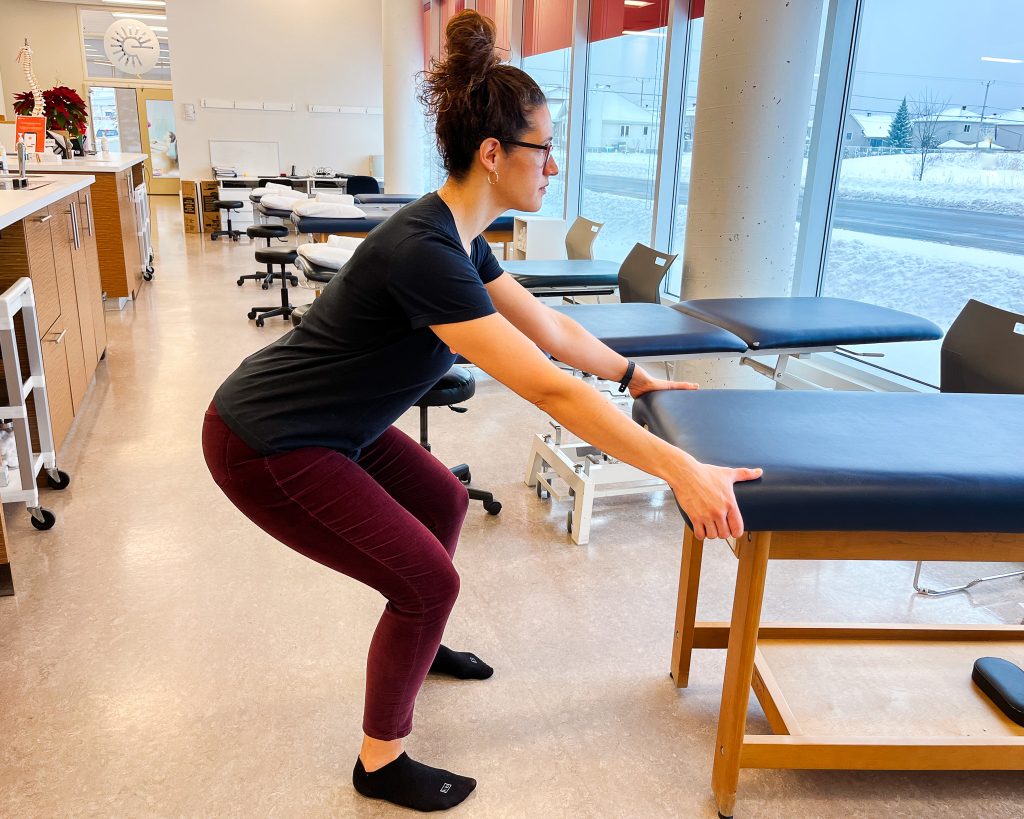
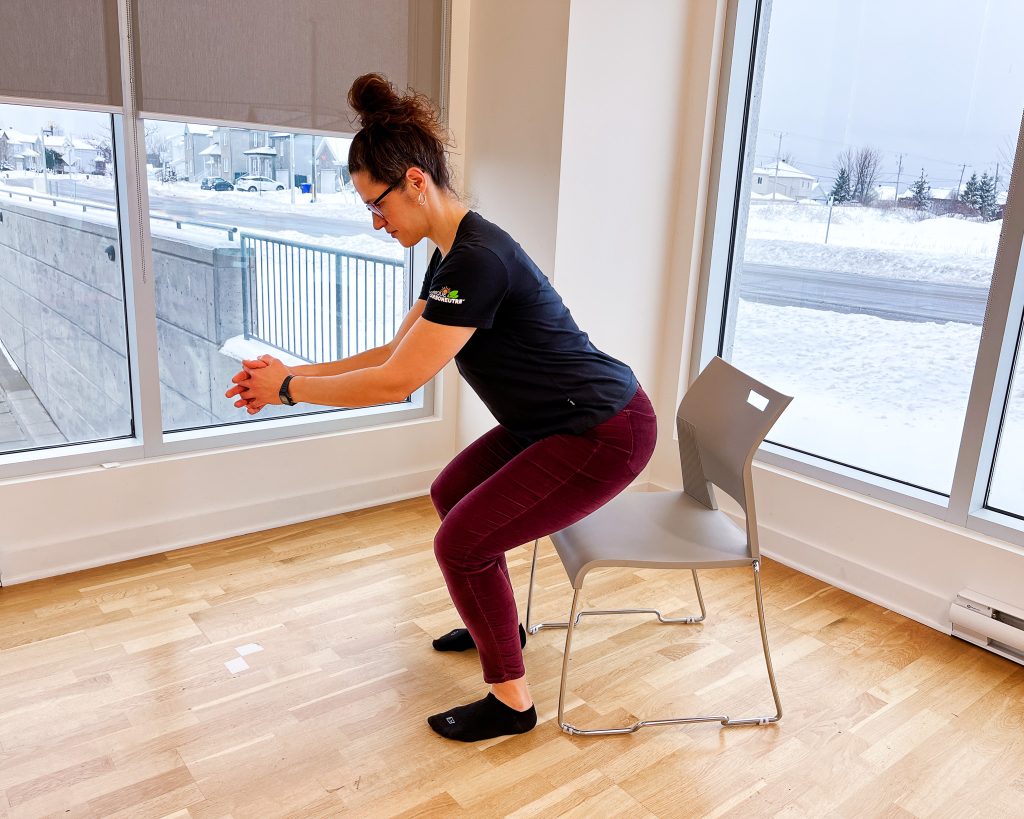
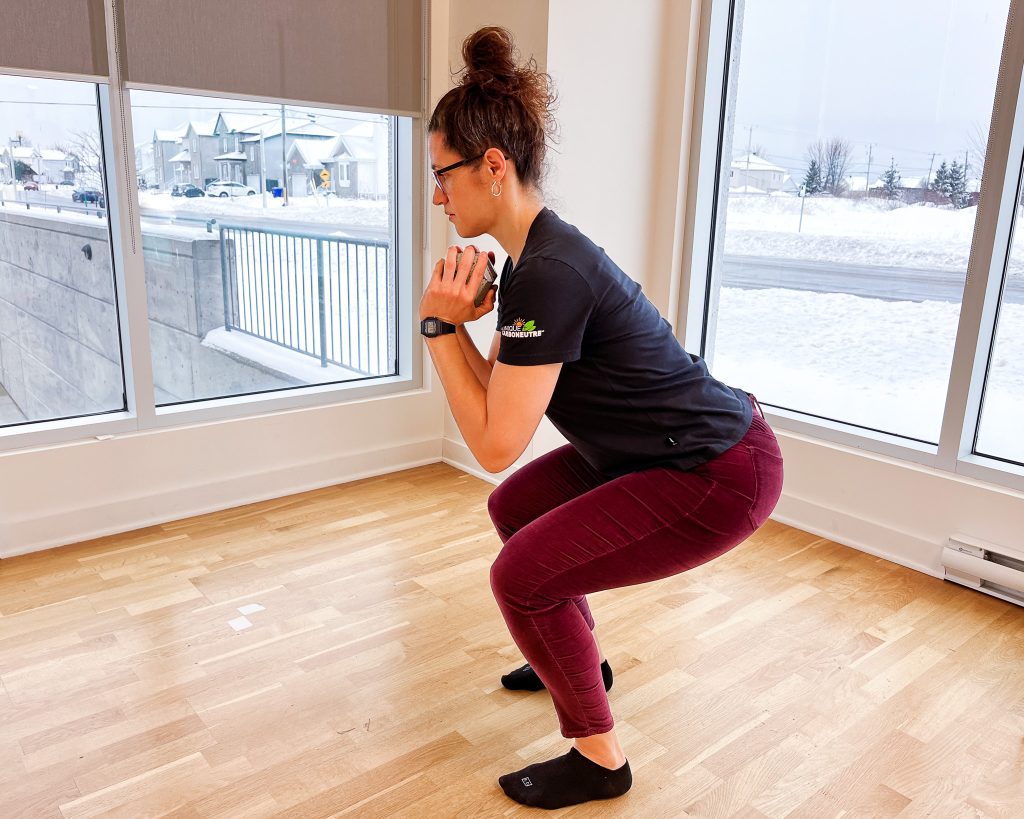
Squatting is the foundational movement to motions such as lunges or split squats. Before progressing to these movements, you should master a proper squat. At Ekinox, our physiotherapists and our kinesiologist can guide you to a safer, more effective workout! Give us a call at 450-455-0111 or book online!


